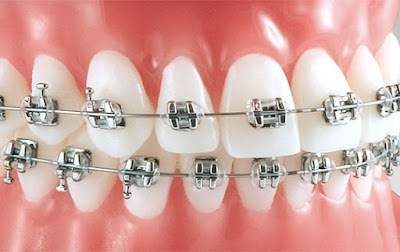Orthodontic treatment involves three stages:
1. Planning Stage – Your first couple of visits may include the following:
A medical and dental history evaluation.
Castings or “molds” of your teeth.
Photographs of your face and mouth.
X-rays of the teeth and jaws.
After careful planning, your orthodontist will design and apply braces or fabricate custom-made appliances for you.
2. Active Stage – Active treatment involves visiting your orthodontist on a regular basis for adjustments and following specific treatment requirements to ensure successful treatment.
3. Retention Stage – When treatment is completed, the braces and/or appliances are removed and a new appliance is made. Usually these retainers are removable and will help to maintain the changes made to your teeth if worn as instructed.
Treatment and retention times vary depending on each individual case. However, retention is a lifetime process. Your orthodontist will ensure you have a successful treatment for a beautiful smile that can last a lifetime.
Orthodontics can not only help straighten your teeth, giving you an appealing smile, but can greatly contribute to the health of your jaw, teeth and sometimes your overall health.
1. Planning Stage – Your first couple of visits may include the following:
A medical and dental history evaluation.
Castings or “molds” of your teeth.
Photographs of your face and mouth.
X-rays of the teeth and jaws.
After careful planning, your orthodontist will design and apply braces or fabricate custom-made appliances for you.
2. Active Stage – Active treatment involves visiting your orthodontist on a regular basis for adjustments and following specific treatment requirements to ensure successful treatment.
3. Retention Stage – When treatment is completed, the braces and/or appliances are removed and a new appliance is made. Usually these retainers are removable and will help to maintain the changes made to your teeth if worn as instructed.
Treatment and retention times vary depending on each individual case. However, retention is a lifetime process. Your orthodontist will ensure you have a successful treatment for a beautiful smile that can last a lifetime.
Orthodontics can not only help straighten your teeth, giving you an appealing smile, but can greatly contribute to the health of your jaw, teeth and sometimes your overall health.



